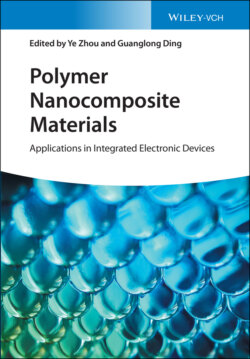Читать книгу Polymer Nanocomposite Materials - Группа авторов - Страница 20
1.5.1 Ultrasonication-assisted Solution Mixing
ОглавлениеThe most widely used approach to produce PNCs is ultrasonication-assisted solution mixing [79–83]. In this method, the nanofillers and polymer are initially dissolved in a solution. Then the nanofillers are evenly distributed in the matrix in assistant of the ultrasound. Afterwards, the PNCs are obtained by evaporation of the solvent. The nanoparticles are separated from the agglomeration state to the smaller units by the ultrasonic energy, which is higher than the energy of interaction between the nanomaterials in the aggregates. With the increase of ultrasonic time, the aggregates of nanofillers are broken down into smaller ones, and even become individual nanoparticles independent of other nanoparticles in the polymer. In addition, this process often occurs at a high temperature, which can initiate in situ polymerization of reactive monomers or their soluble prepolymers with nanomaterials to enhance interfacial interactions [84].
Due to the simple operation and stable performance, the ultrasonic-assisted solution mixing method has been widely used in the researches of new nanocomposites. However, due to the poor effect of ultrasound in high viscosity solution, most of the polymers need to be dissolved in a high boiling point solvent and maintain a low concentration, which will affect the process of solvent removal and ultimately reduce the quality of the nanocomposites. Therefore, when using this method, it is important to pay attention to the choice of solvent.
